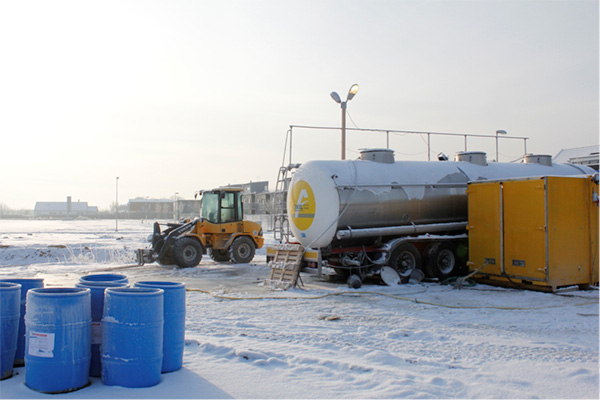Enhanced reductive dechlorination treats chlorinated solvents

Summary
Extensive chlorinated solvent contamination was discovered during the redevelopment of a former manufacturing facility into residential properties, in Helsingborg Sweden. High concentrations of TCE (including DNAPL) were present within the soil and groundwater and the contamination had infiltrated the underlying fractured mudstone bedrock.
A remedial solution was required that would address the groundwater contamination, sorbed contamination in the soils and DNAPL in the impacted bedrock.
Treatment
3-D Microemulsion, an advanced self-distributing and long-lasting electron-donor technology developed by Regenesis, was selected to enhance the natural process of anaerobic bioremediation, whereby indigenous microorganisms biologically degrade contamination.
The 4,000m2 site was treated by 51 direct-push injection points and 32 treatment wells, a set of which were deeper wells drilled into bedrock and some shallower wells targeting the unconsolidated soils.
In total, 13 IBC’s of concentrated 3-D Microemulsion were diluted into solution and injected over two mobilisations. As the injections were carried out in November, the ambient temperature was -20oC and the ground was frozen. Therefore, the solution was warmed to 40oC prior to injection.
What’s Special?
- A single technology (3-D Microemulsion) was able remediate a range of contaminant concentrations within a variety of permeabilies.
- The freezing conditions on site did not impede either the injection works nor the in-situ remediation of the contamination.



 Americas
Americas Europe
Europe Français
Français Deutsch
Deutsch Italiano
Italiano Español
Español
